The frequency and impact of natural disasters in the US significantly increased in recent years. For example, over the past 20 years, the scope of wildfires in California has escalated both in terms of area burned and the number of large fires (defined as 10,000 acres or more).1 These disasters—whether wildfires, hurricanes, floods, or tornadoes—disrupt vital health care services in various ways, including by making it more difficult for patients to access the medications and therapies they need. Such disruptions can be particularly dangerous for patients who require specialty medications and infusion therapy.
Many patients living with chronic, complex, or rare conditions rely on specialty pharmacies and infusion centers for consistent care. Safeguarding the health of these patients by ensuring they continue receiving their treatments and therapies during natural disasters is not just a matter of convenience—it’s a matter of health and survival. That’s why an effective, practiced emergency preparedness plan that includes robust contingency measures is critical for ensuring that specialty pharmacies and infusion centers can maintain operations and deliver lifesaving therapies to the communities they serve.
PREPAREDNESS PLAN
In the face of a natural disaster, those who work in the health care sector must act swiftly and decisively. Here are several core strategies that specialty pharmacies and infusion centers should integrate into their disaster preparedness plans:
1. Communication
Pharmacies should assign a dedicated team to monitor ongoing events and provide proactive outreach to patients, caregivers, and partners. Ensuring clear communication with leadership and external stakeholders using up-to-date talking points is critical. Further, pharmacists can distribute contact lists to staff, including emergency responders, referring clinicians, and key personnel, as well as call patients in impacted or at-risk areas to discuss early refills, alternate delivery locations, and medication storage techniques Notify prescribing providers of any delivery changes, use multiple channels to keep partners informed, including email, text, and phone, and share updates through communication efforts—website notices, press releases, local media, and social media—can also ensure continuity of care.
2. Operations
By securing critical resources—such as backup staffing, transport services, and medical supplies— pharmacists can ensure service continuity. Pharmacies can partner with logistics carriers like FedEx, UPS, and local couriers to establish contingency plans for medication deliveries, including rerouting, and ensure staff understand how emergency declarations affect prescription processing. Pharmacies should also have contingency plans for technology outages or inaccessible facilities, ensuring minimal disruption to patient care, and prepare for storing temperature-sensitive medications if power is lost and maintain emergency backup generators if necessary.
3. Community Outreach
Specialty pharmacies and infusion providers are more than just dispensers of medication—they’re an integral part of the community—and their role doesn’t end with disaster preparedness. After an emergency, specialty pharmacies should collaborate with local organizations and agencies to assess medication status and help patients transition back to their regularly scheduled care plans. They can also contribute to disaster relief efforts either via donations or “on the ground,” reinforcing their role as trusted healthcare resources within the community.
About The Author
George W. Kridner, PharmD, is the CEO at California Specialty Pharmacy (CSP), a comprehensive specialty infusion provider for values-based care entities, health systems, and physician organizations. Serving as CEO of CSP since March 2015, Kridner has over 30 years of experience and an extensive background in pharmacy operations and specialty pharmacy programs. He has held various leadership positions in companies such as UnitedHealth Group, CVS Health, A-Med Health Care, Quality Drug Long Term Care, and Quality Drug Corporation.
SPECIALIZED PREPAREDNESS FOR INFUSIONS
Infusion providers, such as ambulatory infusion centers and specialty pharmacies that provide home infusion services, must have specific protocols in place to ensure continuity of care during disasters. Critical actions for home infusion providers include:
- Contacting patients to ensure they have adequate supplies, including a backup power source for infusion pumps and a three-day medication supply.
- Reaching out to patients in potentially affected areas about supplies, infusion schedules, and upcoming delivery or treatment locations.
- Coordinating with prescribing physicians to address any changes to appointments, scheduled treatments, or deliveries.
- Establishing backup infusion centers or hospitals if in-home or infusion center treatments are disrupted.
EMPOWERING PATIENTS FOR PREPAREDNESS
It’s essential for specialty pharmacies and infusion centers to educate patients on the importance of integrating medication management into their personal disaster preparedness plans. Patients should be encouraged to add medications to their evacuation checklist and store a medication list, including names and dosages, in digital and physical form. They should share this list with a trusted family member or caregiver and save pharmacy and infusion center contacts in their mobile phones for quick access during emergencies.
ENSURING CONTINUITY OF CARE
For specialty pharmacies and infusion centers, maintaining continuity of care is not just about responding to immediate needs; it’s about preparing for the future. Regular reviews of disaster response plans, staff training, and scenario planning ensure that operations remain flexible and that staff is ready to adapt as circumstances change. Health care leaders should cultivate a culture of continuous improvement in disaster preparedness, seeking input from all team members to identify areas of potential risk.
Ultimately, safeguarding patient health during natural disasters requires more than just logistical readiness. It demands a holistic, community-focused approach that places the patient at the center of care. By investing in comprehensive disaster preparedness plans, specialty pharmacies and infusion centers can ensure they remain pillars of support for the most vulnerable patients during the most challenging times.
Ready to impress your pharmacy colleagues with the latest drug information, industry trends, and patient care tips? Sign up today for our free Drug Topics newsletter.
REFERENCES
1. State of California, Office of Environmental Health Hazard Assessment. 2022 Report: Indicators of Climate Change in California. "Wildfires." July 1, 2024. Accessed April 17, 2025. https://oehha.ca.gov/climate-change/epic-2022/impacts-vegetation-and-wildlife/wildfires







































































































































